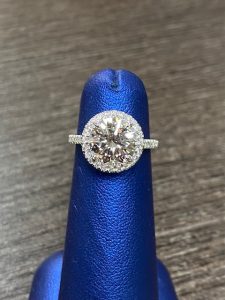

What a breathtaking proposal Mike, Bravo! Demi, thank for your kind Google review, you’re the best!
Keith is amazing!! I first met Keith when my brother-in-law and I went to pick out a ring for my sister. Keith was recommended to my brother-in-law by a family friend. Keith is so kind and knowledgeable and walks you through the process of what you should look for in a jeweler. He is the best in the business, and there is no need to go anywhere else. My brother-in-law and I were both so impressed leaving his office.
He is attentive and funny and makes the experience of designing the ring an amazing one. Once I saw my sister’s ring one day, I knew I wanted Keith to make my ring.
At the time, I wasn’t dating anyone, but Keith told me I could email him my dream ring, and he would keep it on file. I thought that was funny but why not! I emailed him pictures and details of my ring and hoped that my future fiancé would go to Keith one day. I honestly didn’t think he would keep an email sent three years ago, but he did!
My fiancé learned about Keith through my brother-in-law, and he told me when he went to Keith with my sister, Keith pulled up the email I sent him!
My fiancé said from the first phone call to get the ball rolling in making the ring to picking it up was the best experience. He said Keith is a true professional, and you don’t find many people like Keith in the industry. Save your time, and don’t go to those chain jewelers. Keith will go above and beyond from the first time you meet him and even after your significant other gets your ring.
Our family loves Keith!! Thank you for helping my fiancé design my dream sunflower ring and my sisters
Demetra “Demi” Gregorakis
FIVE STARS
May 16, 2002


